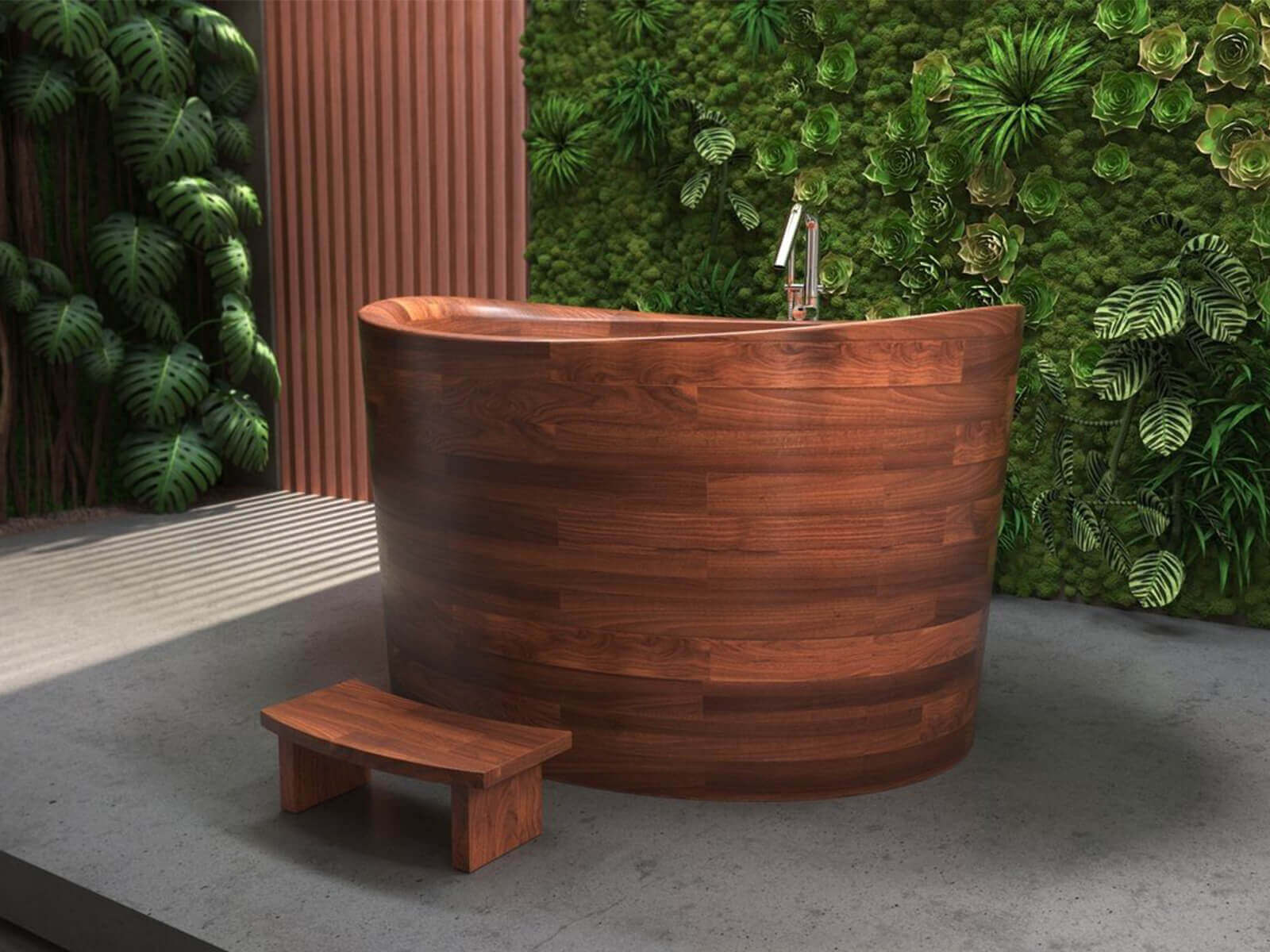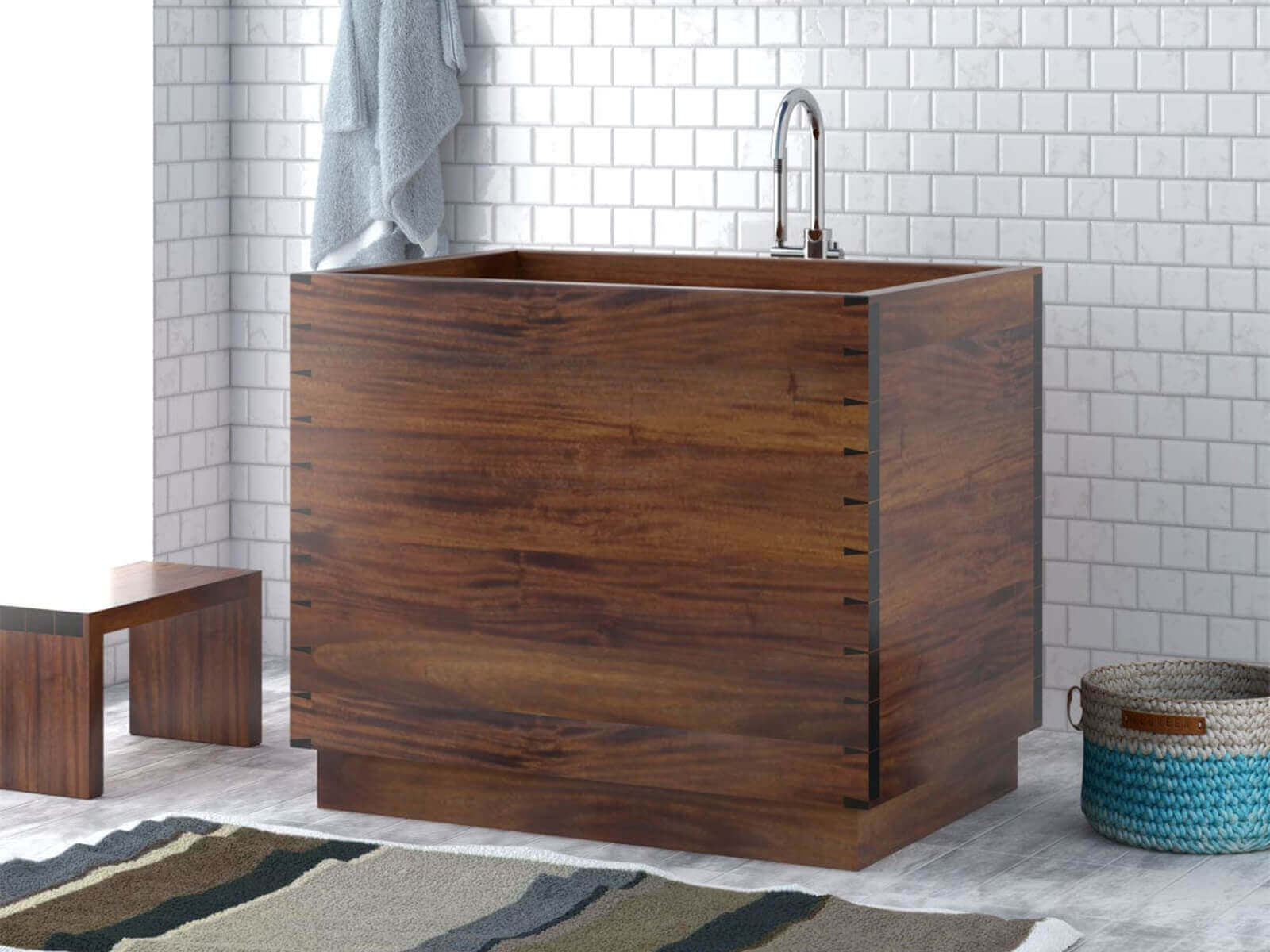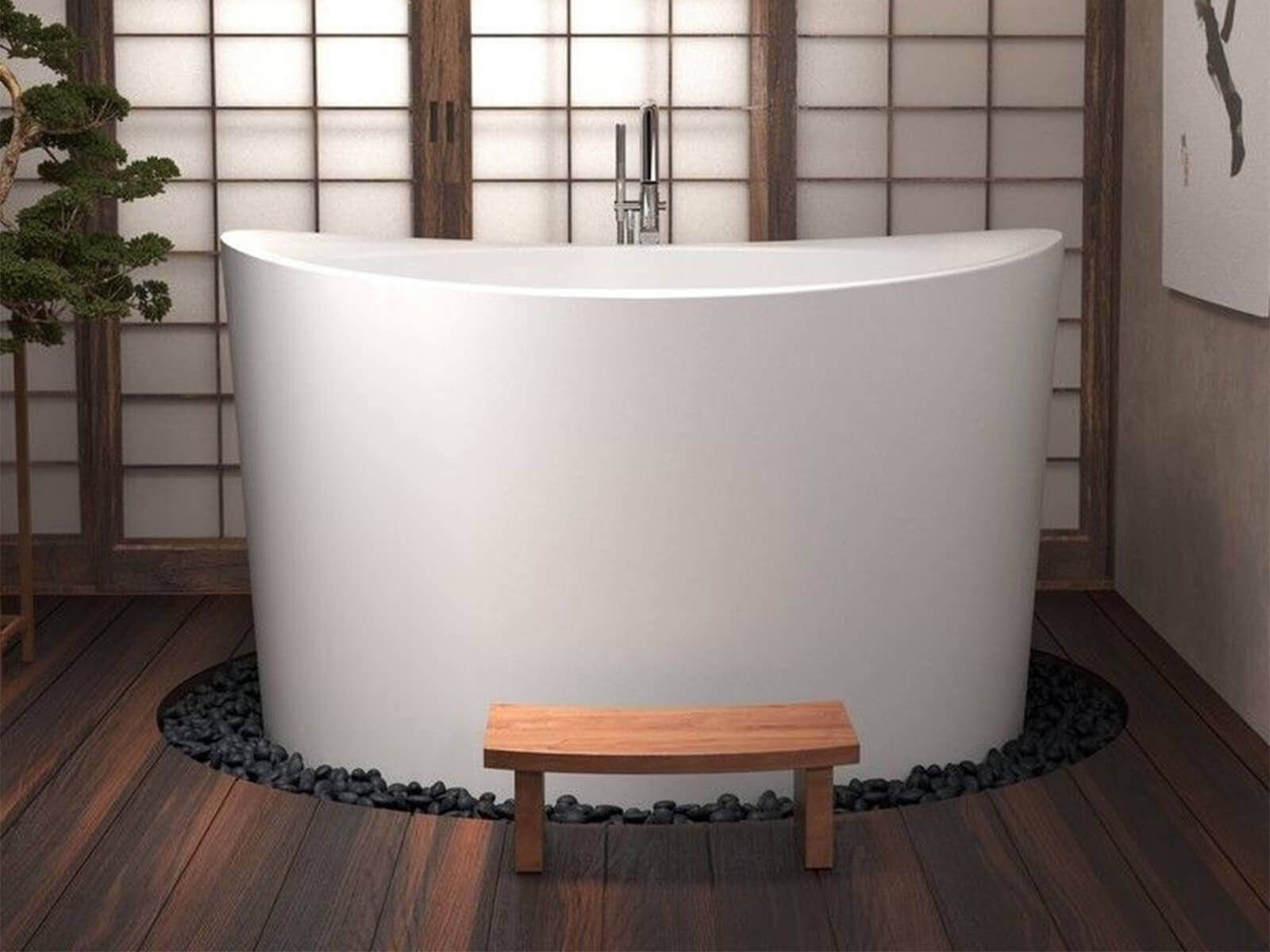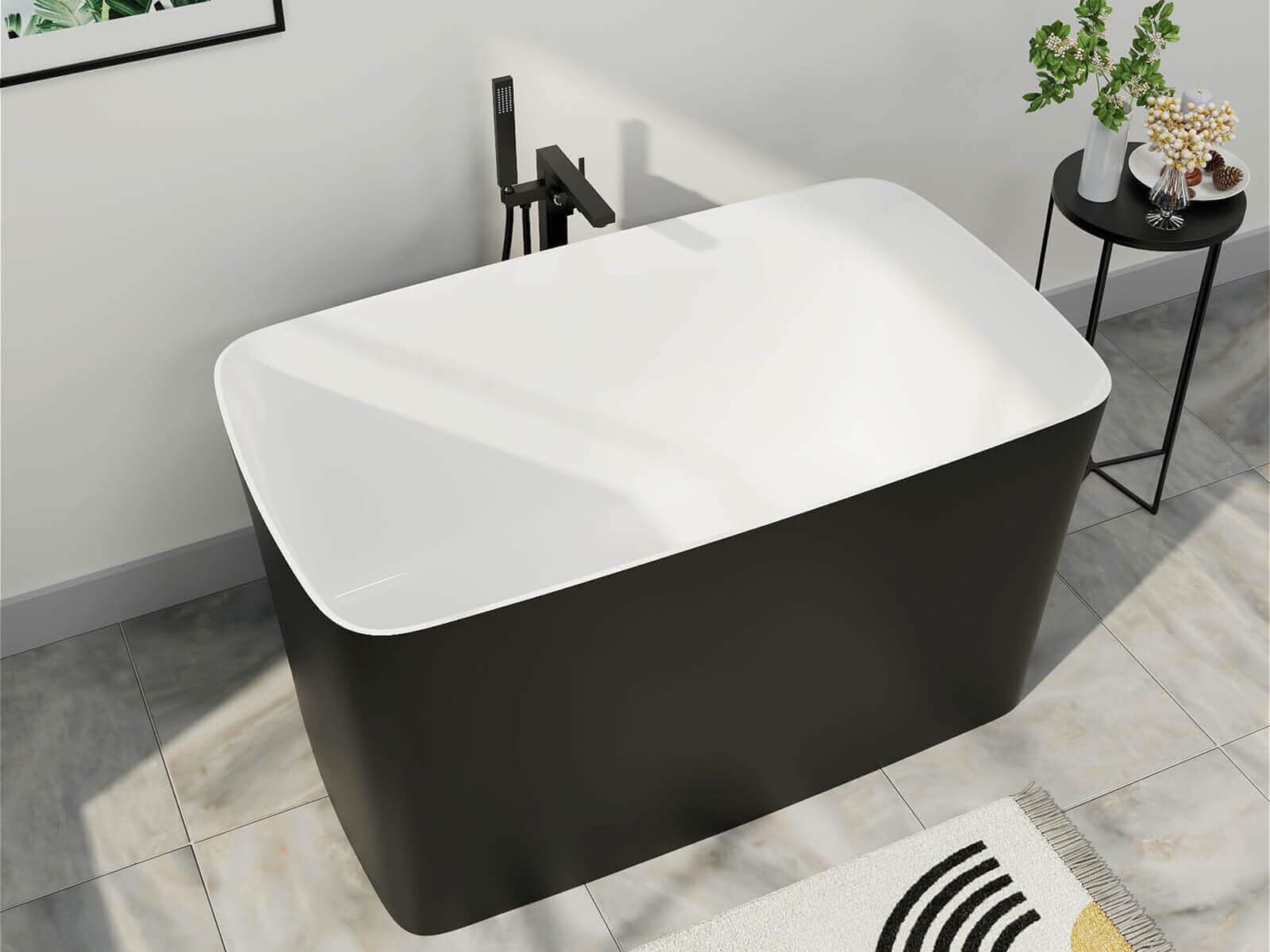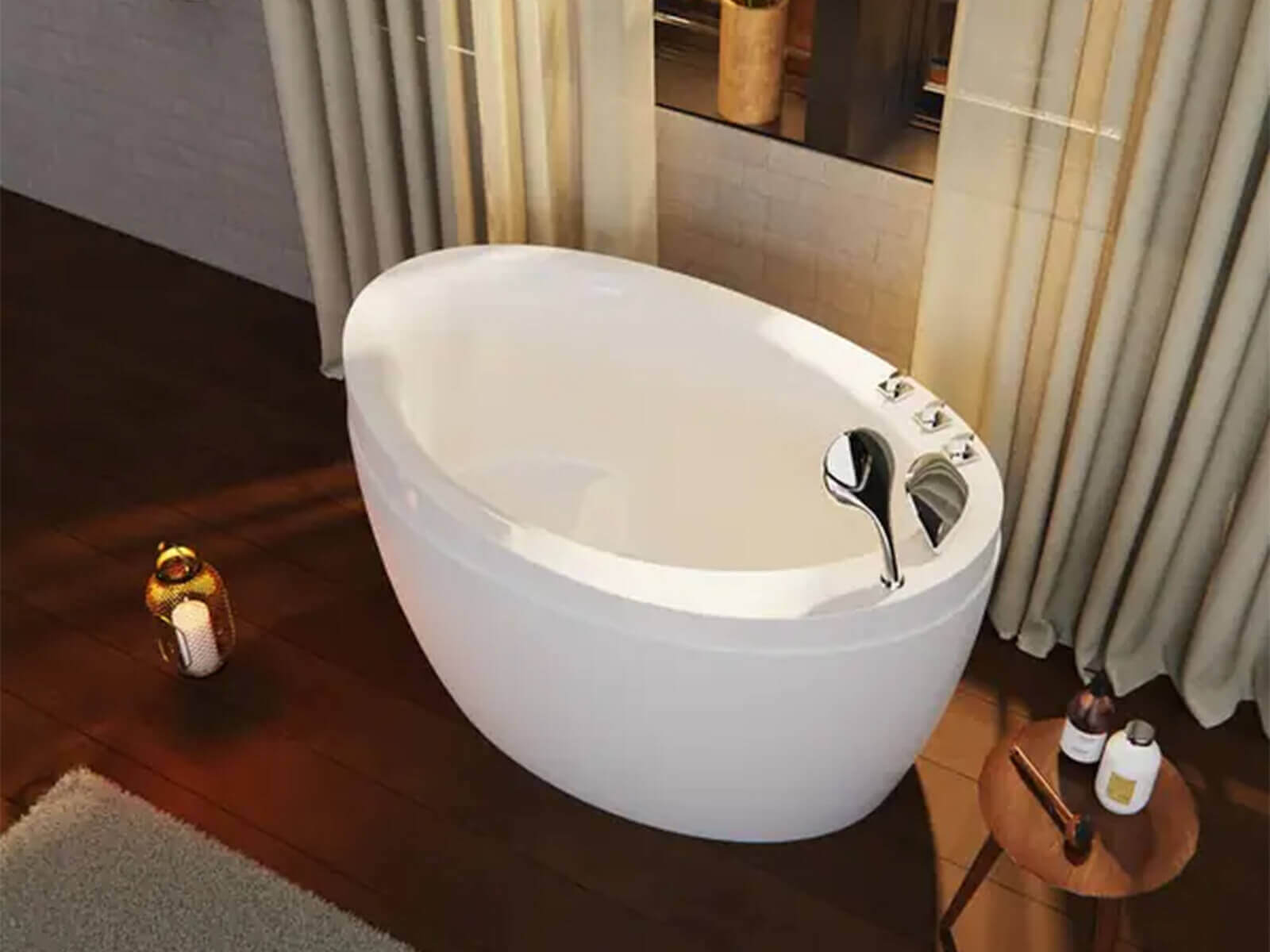The fast-paced nature of modern life has left many feeling both physically exhausted and mentally stressed, creating a need for effective ways to unwind and relax. In this context, Japanese soaking tubs have emerged as an ideal choice for households worldwide. These deep and uniquely designed bathtubs offer a warm soaking experience that focuses on both physical and mental relaxation, transforming from a simple bathroom fixture into a lifestyle indulgence. If this is your first encounter with Japanese soaking tubs, join Giving Tree Home as we explore the captivating design and essence of this remarkable creation!

What is a Japanese Soaking Tub
A Japanese soaking tub, inspired by the traditional Japanese "Ofuro," embodies elements of relaxation and meditation deeply rooted in Japanese culture. These bathtubs are distinctively designed—deep and compact, often taking up minimal space. Unlike Western bathtubs, which are designed for reclining, Japanese soaking tubs are crafted for users to sit upright while soaking. Most Japanese soaking tubs offer a soaking depth of about 19 inches (from the base to the overflow outlet), allowing the water level to reach shoulder height. This provides a more immersive and thorough relaxation experience, helping to alleviate stress and fatigue from daily life.
Additionally, these bathtubs emphasize the use of hot water, typically maintained at higher temperatures (around 104–108°F), a feature closely tied to Japan's traditional bathing culture. The purpose of the hot water extends beyond cleansing—it helps relieve stress, improve blood circulation, and promote overall well-being.
What Does a Japanese Soaking Bathtub Look Like
Japanese soaking tubs showcase a diverse range of designs, blending traditional elements with modern aesthetics. Traditional Ofuro tubs are often crafted from natural woods like hinoki, cedar, or sandalwood, emphasizing the natural grain and texture of the material. For example, the natural tones of hinoki or cedar exude a warm and organic atmosphere. Over time, demand has led to the development of products made from various materials with more extensive color options, with black and white being the most popular for their simplicity and elegance. Copper-based Japanese soaking tubs, with their distinctive brass hues, add a touch of timeless, vintage charm.
From a structural perspective, wooden Japanese soaking tubs are typically designed with a panel construction, giving the appearance of being assembled from multiple wooden boards and showcasing the craftsmanship of traditional artisans. In contrast, modern materials like acrylic or stone often feature a seamless design with smooth surfaces and flowing lines, highlighting the sophistication of contemporary manufacturing techniques. As for shapes, Japanese soaking tubs commonly adhere to minimalist principles, favoring round or square forms. Round tubs often featuring thicker edges and resembling a wooden barrel, evoke a strong sense of traditional Japanese aesthetics and are typically freestanding designs. Square tubs, on the other hand, are versatile, available in both freestanding and built-in styles to accommodate varying space and design needs.
However, as functional demands have increased, the design of Japanese soaking tubs has evolved beyond their traditional static forms. High-tech iterations may include features like massage jets, hydrotherapy systems, and other smart elements, offering a more comprehensive bathing experience. Consequently, appearance alone no longer fully defines a Japanese tub, as its designs and functionalities continue to expand in response to the diverse needs of consumers, showcasing endless possibilities.
Origins of the Japanese Soaking Tub
The origins of the Japanese soaking tub are deeply rooted in Japan's hot spring culture, which itself stems from the country's unique geographical and historical background. As a nation with many volcanoes, Japan is blessed with abundant natural hot springs, whose mineral-rich waters help relieve muscle fatigue, improve blood circulation, and promote overall health. Since ancient times, hot springs have been an integral part of Japanese society, enjoyed by everyone from the common people to the nobility as places for rest and relaxation.
In Japanese culture, bathing is not just a way to relax the body and mind but also carries deep social and spiritual significance. Ancient hot springs were considered sacred places, often built near shrines, where bathing was seen as a ritual for purifying the body and spirit and drawing closer to the divine. Over time, this tradition evolved into a popular practice for all social classes. Hot spring inns became gathering spots, not only for rest but also for socializing, and even led to the development of unique bathing etiquette and culture, such as the necessity of cleaning the body before entering the hot springs to maintain water cleanliness. This rigorous bathing culture also influenced the later development of home bathtubs.

With urbanization and the expansion of living spaces, the concept of hot springs gradually permeated domestic life, leading to the emergence of home bathtubs, such as the "Ofuro" mentioned earlier. These wooden tubs not only retain heat but also exude a subtle wooden fragrance, further enhancing the soaking experience.
Given the uniqueness and wide appeal of Japan's hot spring culture, the "Ofuro" gradually expanded beyond Japan and entered international markets. In countries that prioritize quality of life and health experiences, the deep design and functionality of the Japanese soaking tub quickly won the favor of consumers. Its minimalist yet elegant aesthetic complements modern home styles, and the complete relaxation it offers through deep immersion has become an indispensable part of many people's daily lives.
Modern Japanese Soaking Tubs vs Traditional Ofuro
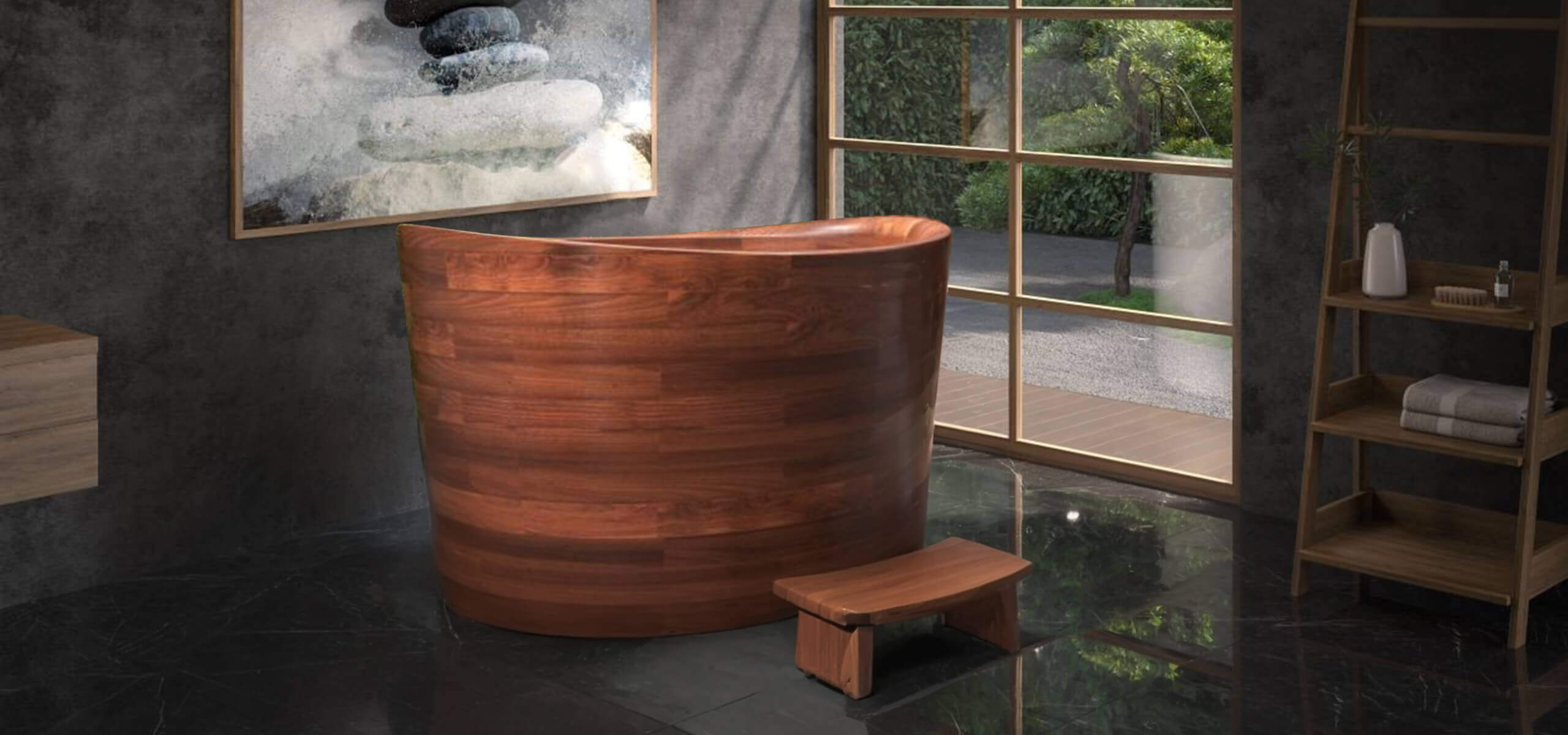
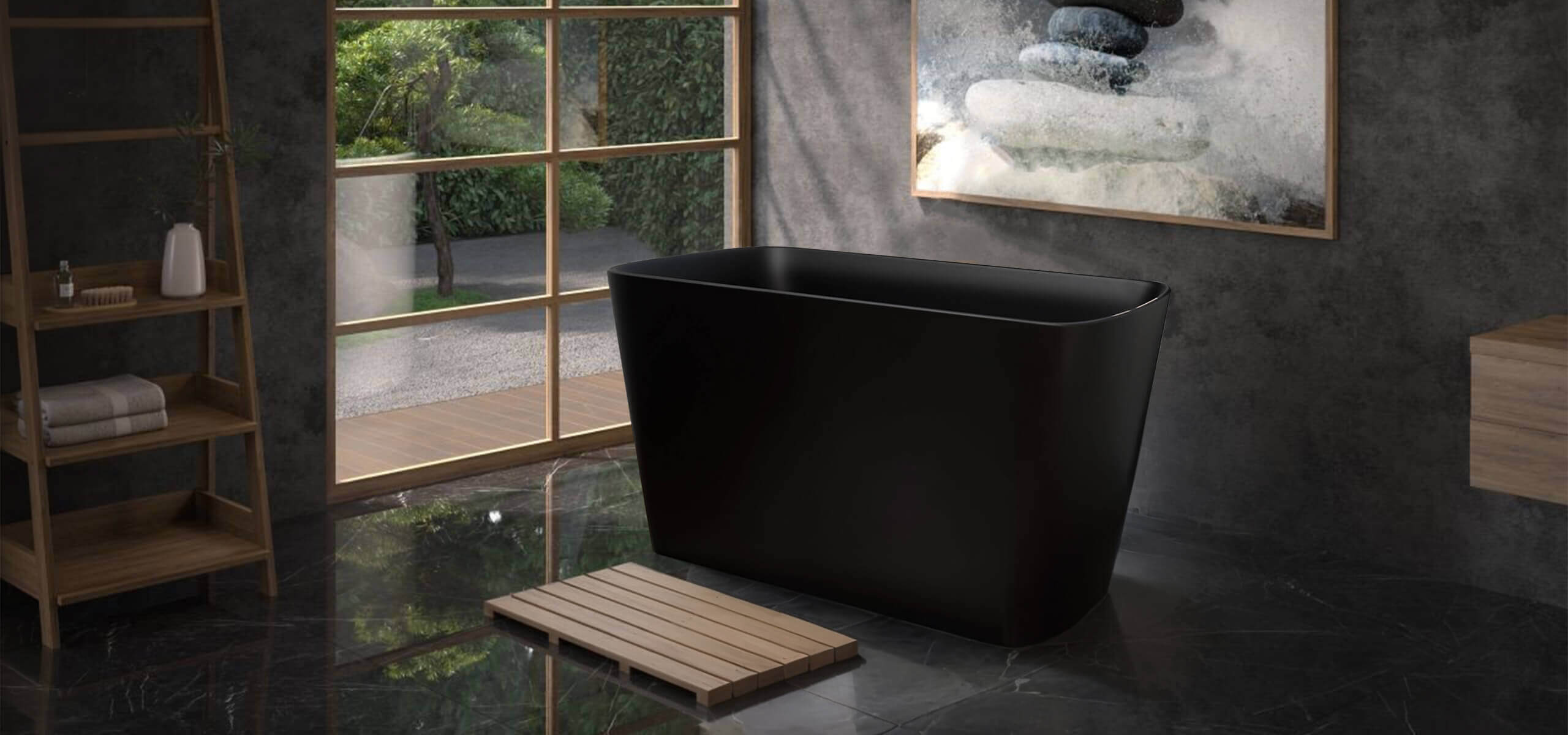
While both modern Japanese soaking tubs and traditional Ofuro tubs maintain the concept of deep immersion and uphold the core values of Japan’s bathing culture, there are significant differences in materials, functionality, and design aesthetics between the two.
Evolution of Materials and Craftsmanship
Traditional Ofuro tubs are primarily made from natural woods, such as cypress, cedar, and sandalwood. These woods not only provide a natural fragrance but also offer good heat retention properties. The craftsmanship involved in making each tub gives it a unique texture and cultural ambiance. However, wooden materials require high maintenance, especially in high-humidity environments where cracking or warping may occur, demanding more care from the user.
In contrast, modern Japanese soaking tubs have undergone material innovations, using ceramics, acrylic, stainless steel, and composite materials. These modern materials have distinct advantages, such as higher durability, easier cleaning, and suitability for a variety of design aesthetics.
Additionally, the integration of modern manufacturing techniques has led to more standardized production, ensuring stable product quality and significantly lowering manufacturing costs. Traditional Ofuro tubs can cost up to $10,000, whereas some acrylic Japanese soaking tubs may cost less than $1,000. This substantial cost reduction makes the allure of Japanese soaking tubs accessible to a broader range of consumers.
Expansion of Functionality
Traditional Ofuro tubs are designed mainly for soaking, emphasizing relaxation through the enveloping effect of hot water. However, they do not accommodate the bathing function, mainly due to the use of natural wood, which can absorb chemicals from bath products like soap and shower gel. This can lead to mold, unpleasant odors, or deterioration of the wood. As a result, users of traditional Ofuro tubs typically need to clean their bodies thoroughly outside the tub before soaking.
In comparison, modern Japanese soaking tubs significantly overcome these limitations. The use of modern materials like ceramics, acrylic, and stainless steel ensures that these tubs do not absorb chemicals and eliminates concerns about mold, enabling them to accommodate both bathing and soaking needs. Furthermore, some models incorporate temperature-regulated heating functions, solving the problem of water cooling and extending the comfort time for soaking.
Evolution of Aesthetic Design
Traditional Ofuro tubs are often constructed with planks of wood, making it difficult to diversify their shapes. As a result, they usually maintain the appearance of a wooden barrel, reflecting a strong traditional Japanese aesthetic. The minimalist design and natural wood grain perfectly blend to create a subtle yet elegant beauty. This style is commonly found in traditional Japanese homes, onsen inns, and garden bathrooms, evoking a sense of harmony with nature.
Modern Japanese soaking tubs, on the other hand, offer more diverse designs to suit different cultural backgrounds and home styles. For instance, the emphasis on clean lines and practical structures makes them ideal for modern urban home décor. Exposed metal materials and cool-toned designs create a forward-thinking, personalized industrial style. For those seeking unique designs, some Japanese soaking tubs are crafted in irregular shapes to enhance visual impact.
Ending
Japanese soaking tubs stand as a perfect embodiment of both tradition and modernity, offering a serene, luxurious bathing experience that resonates deeply with the values of relaxation and well-being. While the traditional Ofuro represents the roots of Japan’s rich bathing culture, the modern Japanese soaking tub combines the best of contemporary materials and technology to cater to diverse functional needs and aesthetic preferences. Whether you seek a quiet retreat after a long day or a statement piece for your bathroom, these tubs transform any space into a sanctuary.
More Ideas
-

French Country Bathroom Design
If you're dreaming of a bathroom that’s understated yet elegant, rustic yet romantic, this guide by Giving Tree Home will help you explore the essence of French Country bathrooms. We'll...
-

10 Half Bathroom Ideas to Maximize Style in Small Spaces
You may find it hard to refresh the half bathroom space that you already have, but don't worry; we've some great small half bathroom ideas that would come handy to...
-

Top 10 Bathroom Shelf Ideas to Maximize Space and Style
Discover the top 10 bathroom shelf ideas to maximize space and add style. From floating shelves to rustic designs, explore the best bathroom storage solutions.
-

Bathroom Vanity Height Selection Guide
Find the perfect bathroom vanity height for comfort and functionality. The standard height is 30"-34", while a comfortable height for taller users is 36". Learn how to choose the best...
-

6 Creative Black Bathroom Design Ideas
Black has become a popular choice in modern bathroom design, adding sophistication, luxury, and drama. Whether as an accent or primary color, it transforms spaces with sleek tiles, bold vanities,...
-

How to Use a Toilet Seat Cover
Toilet seats are breeding grounds for bacteria. To maintain hygiene and avoid direct contact with dirt in public restrooms, using a toilet seat cover is the best solution. It's simple,...

